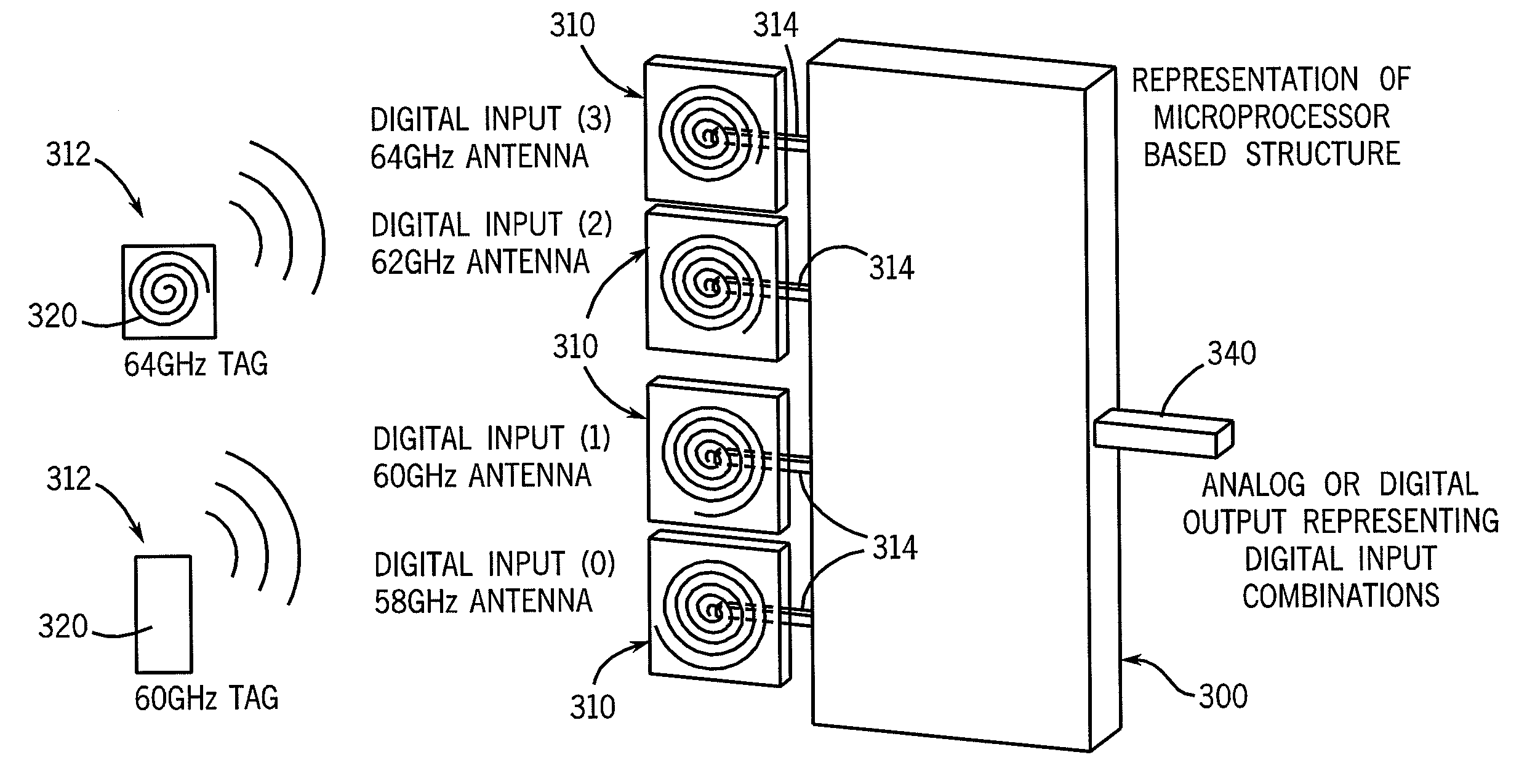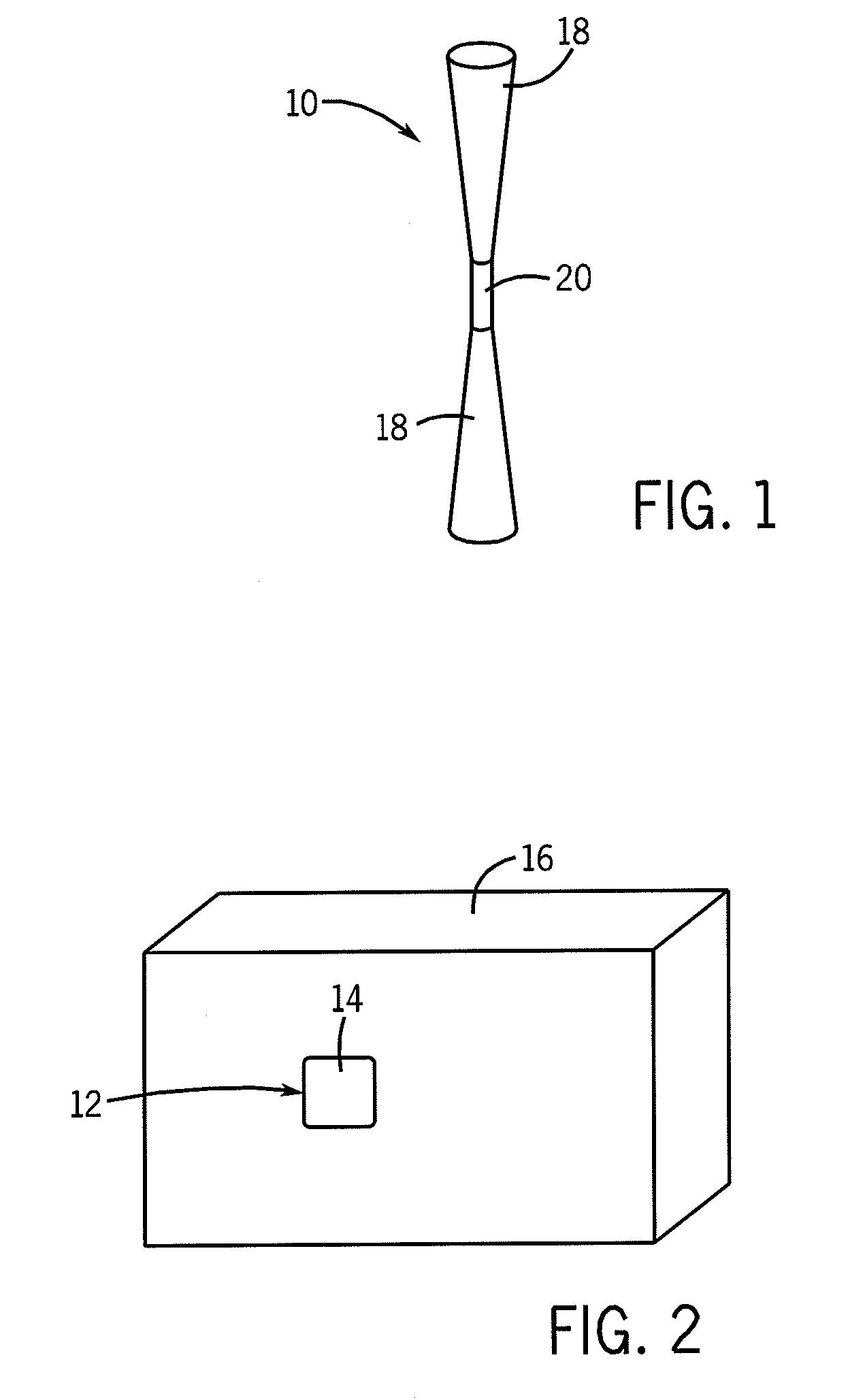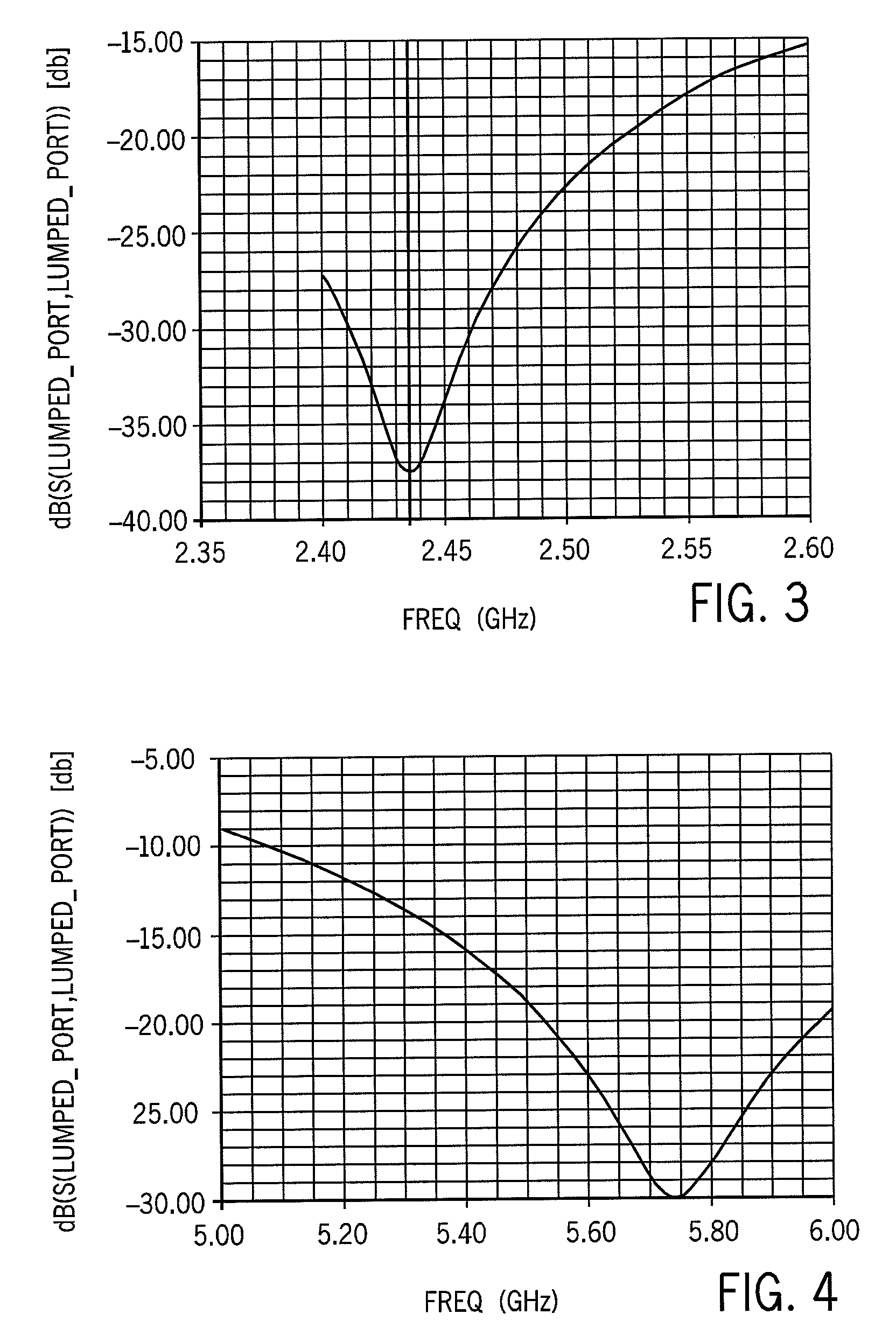Multi-Dimensional Broadband Track and Trace Sensor Radio Frequency Identification Device
a radio frequency identification and multi-dimensional technology, applied in the direction of instruments, computing, and feed intermediates, can solve the problems of multiple rfid tag devices modulating within the same area and within limiting the effectiveness of rfid tags having 2d antennas, and affecting signal interference of multiple rfid tag devices modulating within the same area and the same frequency bandwidth, so as to reduce the size of the overall tag device, reduce the loss of efficiency, and directivity optimum read angle angl
- Summary
- Abstract
- Description
- Claims
- Application Information
AI Technical Summary
Benefits of technology
Problems solved by technology
Method used
Image
Examples
second embodiment
[0054] Referring now to FIG. 13, in the present invention, the antenna 110 is formed of a pair of conductive material strips 118, which can be formed of a metal or a metal oxide, for example, though other materials can also be utilized, each having a spiral shape, and preferably an Archimedean spiral shape, that extend outwardly in a gradually increasing, radially expanding manner that is positioned on a suitable substrate material 120, e.g., silicon, that is less than 3 mm2 in size, and preferably less than 2.5 mm2 in size. The pair of spiral strips 118 are disposed in the same plane on the surface of the substrate material 120, and have a turn ratio of 0.255, and are approximately 2.80 turns in length. The innermost ends 122 of each spiral 118 are joined to one another on the substrate 120 by a suitable receiver device 126, which is can be a data chip. The size of the spiral strips 118, i.e., the turn ratio and turn length, varies for each antenna 110, similarly to the previous em...
third embodiment
[0055] In a third embodiment the present invention, best shown in FIG. 15, the tag 212 can be formed with a pair of spiral antennas 218 on between 3 mm2, and preferably less than 2.5 mm2 of a substrate material 220 formed from a suitable material, such as silicon. The pair of spiral strips 218 are disposed in different planes on opposed surfaces of the substrate material 220, and have a turn ratio of 0.255, and are approximately 2.88 turns in length. The innermost ends 222 of each spiral 218 forming the antenna 210 are connected to one another by a receiver device 226 that can include a suitable structure 230 that extends through the substrate material 220 between the innermost ends 222 of the spirals 218. In this construction, the two spirals 218 can function as a single antenna 210, or can be configured to operate as separate antennas 210, if desired. The length of the structure 230 is selected as desired depending upon the size of the substrate material 220 and the size of the sp...
first embodiment
[0059] In short, as illustrated by these results, the radiation efficiency of each 3D antenna 110 and 210 is maintained one hundred percent, and the return loss is minimal, such that the reduction in size from the 3D antenna configuration does not negatively affect the ability of the antennas 110 and 210 to function in a manner similar to the conventional antennas currently in use with RFID tag devices, similarly to the bi-conical antennas 10 in the
[0060] In employing the antennas 110 or 210 for use in RFID tag devices 12, in a preferred implementation similar to the first embodiment, the RFID tag device 12 includes a signal filter component 132 or 232 as shown in FIGS. 17 and 18 that are formed of an RLC network to achieve circuit resonance near a particular frequency for antennas 110 and 210. The filters 132 and 232 narrow the effective frequency or the antennas 10 and 210, such that the responses for the antennas 110 and 210 are as illustrated in FIGS. 19 and 20. The antennas 110...
PUM
 Login to View More
Login to View More Abstract
Description
Claims
Application Information
 Login to View More
Login to View More - R&D
- Intellectual Property
- Life Sciences
- Materials
- Tech Scout
- Unparalleled Data Quality
- Higher Quality Content
- 60% Fewer Hallucinations
Browse by: Latest US Patents, China's latest patents, Technical Efficacy Thesaurus, Application Domain, Technology Topic, Popular Technical Reports.
© 2025 PatSnap. All rights reserved.Legal|Privacy policy|Modern Slavery Act Transparency Statement|Sitemap|About US| Contact US: help@patsnap.com



